People in sports, both amateurs and pros, often confuse the term “strength”. This was my case too. In 2000, weighing 135 kg, I bench pressed 265 kg. But that had absolutely no reflection in armwrestling. On the contrary. A huge chest and triceps were an actual drag in an armfight. But despite that, I still say that chest muscles are important in our discipline.
I know a couple of cases where a chest muscles injury took people permanently out of armwrestling. One of those is a Russian fighter, Andrey Junkov, who tore a pectoral muscle during training. He ignored his doctor’s advice (didn’t undergo surgery), and now he cannot fight with his right arm ever again. All he has is left. There are also cases like that in Polish armwrestling. One of them is a leading contestant, Artur Głowiński. You can notice that he fights only left-handed. You can actually see he had a torn chest muscle, which makes it impossible for him to fight in hook.
…what does chest do in armwrestling?
It is a common question among both contestants and fans of the sport – why does the elbow sometimes slip from the pad? There are a couple of reasons. One is lack of elbow control during a fight. Another is ignoring the chest, which actually controls the elbow in its place on the pad. To fight in hook, both for attacking and finishing, strong chest muscles are a must. Without a strong chest, you cannot make a strong start. In over the top, the end phase of attack also heavily involves chest muscles. All of the above go to show you that chest is indispensable in our sport.
…what to do with the chest?
Even though bench pressing is not the best exercise for an armwrestler, it doesn’t mean one should avoid it completely. Armwrestling demands a lot of pulling exercise. One example can be the butterfly. Short, controlled movement on this machine helps develop maximum strength in the angle between arm and body. Of course, full-range exercises for chest are also important in our case, but only as a way to warm up. Let’s keep in mind that we want to develop strength, not girth. Some of us seem to forget that.
…warmup
Before the chest workout proper (as well as any other workout), one needs to warm up. First two sets should be performed with full range motion and small weights. The following sets are the training proper. Here one should increase weight, according to one’s capabilities. More on that later.
Ignoring the warmup often enough can lead to injury. Remember – tearing a chest muscle means saying goodbye to sports forever.
…workout
There’s a lot of exercises for chest muscles: starting with bench pressing, stretches, and ending at various pulls. But not all of them are useful to an armwrestler. Many of them are just meant to increase girth. Don’t waste time with exercise fruitless from the armwrestling point of view. Here’s a few exercises that are a must for any armwrestler.
BUTTERFLY EXERCISES
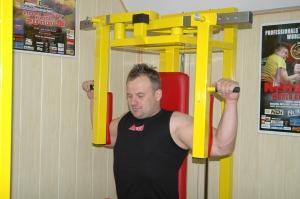
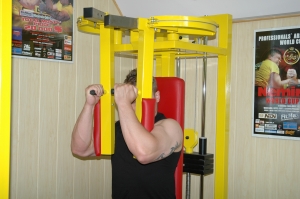
5-6 sets, 6-8 reps. First two sets should be performed with small weights, as a warm-up. Then increase weight according to your capability, until in the last set you cannot get past 6 reps.
BENCH PRESSING ON A HORIZONTAL BENCH
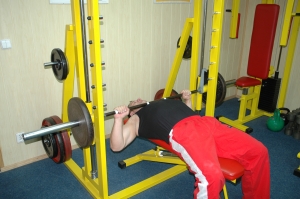
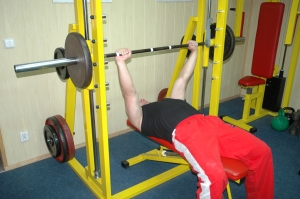
Don’t focus on this exercise too much, as it engages triceps as well as chest. Treat it as supplementary. Huge weights in this case do not improve armwrestling skills. 3-4 sets, 8-10 reps will do. First set should be a warmup, then increase weight until in the last set you cannot get past 8 reps.
TWO-HANDED PULLS ON REGULATED PULLEY
A.
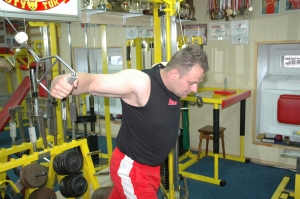
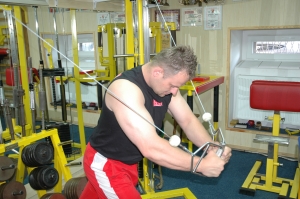
B
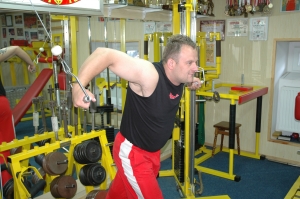
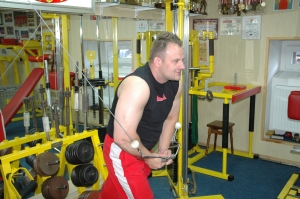
Another supplementary exercise. In version A, hands are pointed forward. In B, hands are pointed down. 3-4 sets, 8-10 reps.
BAR EXERCISES
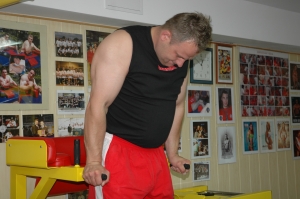
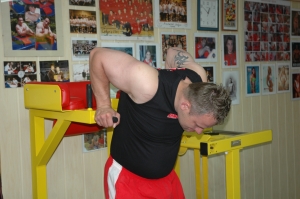
On of crucial elements in any armwrestler’s workout. Many professionals include this as the basic exercise for chest. For example – Ruslan Babayev (European and World Champion) likes to do this exercise with weights up to 60 kg, with bodyweight of 80-83 kg.
6-7 sets, 6-10 reps. First two sets should be treated as warm-up.
PRONATION WITH REGULATED PULLEY AND HALF-TABLE
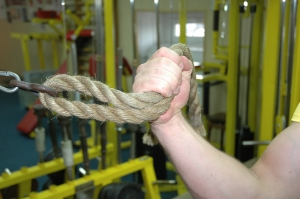
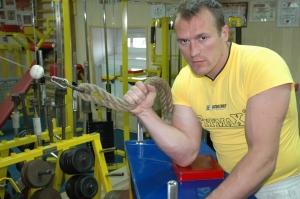
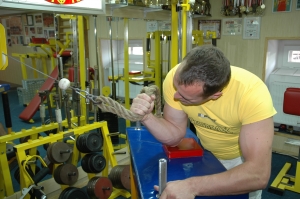
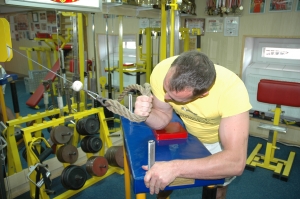
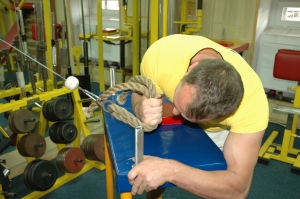
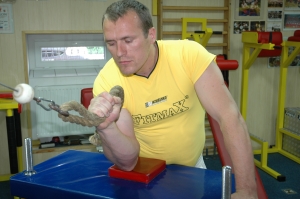
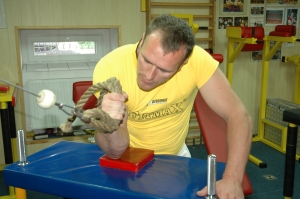
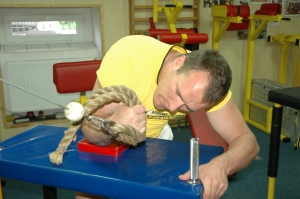
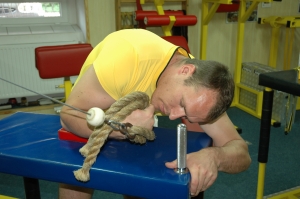
Strongly engages the chest muscles. A must for everyone who fights in hook. Notice that a fat rope is being used here, strengthening the pinky finger (necessary when fighting in hook). Remember to keep your elbow on the pad.
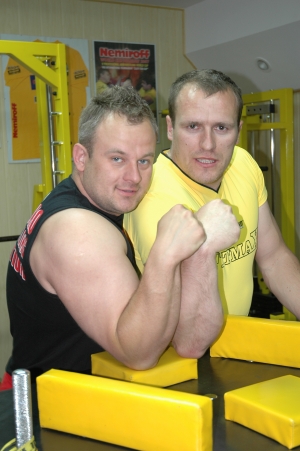
Training methods demonstrated by Polish Champions: Krzysztof Kubiak from Gdańsk (on the left) and Krystian Kruszyński from Gdynia (on the right).

